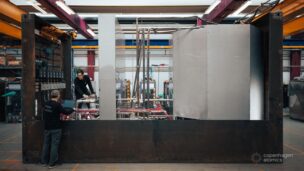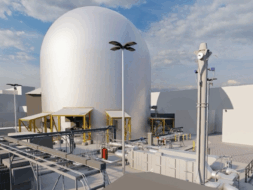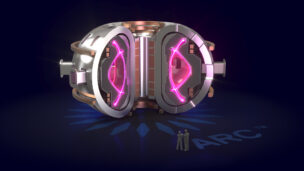Across a few of its business arms, Rolls-Royce has been working on building nuclear systems that can keep things running in the space environment. Now, the company has secured a contract with NASA to develop additional supporting technology for those spacecraft.
Rolls-Royce’s US-based LibertyWorks R&D shop won a $1M contract with NASA to design a power conversion system for nuclear-powered space assets.
- It’s a 12-month contract culminating in a design for NASA, which could lead to additional contracts for hardware development.
- Conversion = the part of the process that takes the energy output from the nuclear reaction and turns it into usable electricity.
- The contract narrows the project’s scope to power conversion, and the design is meant to work with nuclear space systems designed either by Rolls-Royce or other companies.
The conversion system in question will be a Brayton cycle, which is entirely enclosed and doesn’t need ambient air as an input. (That makes a lot of sense for operations in the void of space, if you ask us.)
“Rolls-Royce is very excited about this particular market because it leverages several of our key strengths and puts us at an advantage over other entities that don’t have gas turbine experience the way that we do,” Eric Maxeiner, VP of business development for space power at Rolls-Royce, told Ignition.
Nukes in space: US civil and military agencies—along with a host of foreign governmental organizations—have for years considered the potential of bringing back nuclear power for in-space applications. Theoretically, nuclear could provide more reliable and consistent maneuverability for spacecraft in orbit—or get astronauts to Mars far more quickly than other systems available today. It could also provide power for a future long-term human outpost on the Moon. or other celestial bodies.
On the other side of the pond, Rolls-Royce is working with the UK Space Agency to develop concepts for reactors on the Moon. The company also announced last week that it was expanding its partnership with BWXT under a £1.18M ($1.46M) UKSA contract to explore systems for deploying microreactors in space.
The next step: Over the next year, Rolls-Royce will develop its design pitch for a closed-cycle power conversion system for space technologies. From there, NASA will decide whether to pursue further hardware development of the system.
“We don’t see this as a one-off contract for us,” Maxeiner said. “We see this as part of growing our capability and brand within power conversion for space nuclear.”
Lead Reporter of Ignition





